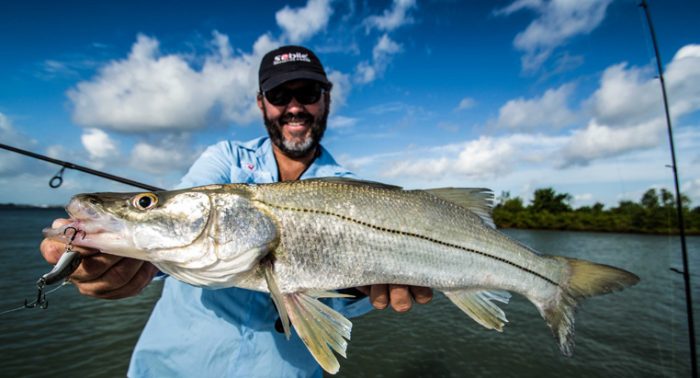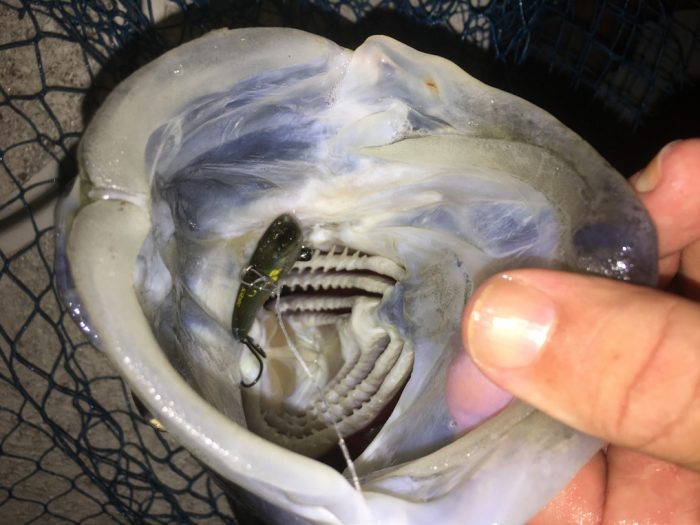Bass anglers use lipless crankbaits in many circumstances and ways. I believe it is not used enough for reds, trout, tarpon, and snook. In fact, a lipless crankbait is one of the most effective baits to catch fish in shallow water, and it’s definitively one of those I use often.
And I’m not alone. When Louisiana’s famous Team Broussard was at the very top of their tournament career a few years ago, “Cajun” Phil and Capt. Kevin had many wins including the Redfish Cup and Team of the Year titles. The secret weapon they were hiding from media and competitors alike was a Flatt Shadd 50 Snagless.
That small, compact, lipless crankbait puts out vibrations that travel far through the water, catching the predator’s attention as if it was a much larger bait. The quick, side-to-side motion also creates a lot of flashes, adding visual attraction.
When I was the Mepps spinner designer 20 years ago, I worked closely with scientists who had an understanding of the factors that attract predatory fish. The type of vibration and its volume were key. Both with inline spinners and lipless crankbaits, moving a significant amount of water is essential for creating signals that are much larger than many other types of baits. This is why baits with spinning blades and those that emit vibrations commonly catch large fish, even when the lures are small.
Often, a predatory fish is first alerted to a potential meal by its lateral line, a natural radar. These small baits fool the fish into thinking it is chasing down much larger and more significant prey.
How do you use a lipless crankbait best when you’re on the flats or casting close to the mangroves? If it is deep enough, you can cast and burn it or slow roll it to offer consistent action and cover lots of water as a search bait. This is the main way I use a lipless bait when targeting tarpon or large channel bass (red drum) in main inlets, estuaries and anywhere there is enough depth and preferably some current.
But for the true, shallow inshore and backcountry fishing, I use them as I would a soft jerkbait rigged on a jig head. I twitch-twitch-pause and yo-yo it. The great thing with a vibrating bait is every time you pull on the rod, you can feel the bait reacting. Action can be constant when fish are aggressive, but for cold water or finicky fish, don’t hesitate to let the lure pause on the ground for a few seconds here and there. You might be surprised to find the majority of bites happen on the drop, or even when the lure is lying motionless. Fish can be so hungry for it that they swallow it in a snap, resulting in more than you can imagine in hook sets deep within the fish’s mouth.
If you haven’t thrown a small lipless crankbait around in the shallows, give it a try. You might be pleasantly surprised.
Patrick Sebile is the owner and lure designer of Sebile Innovative Fishing (www.sebile.com).

